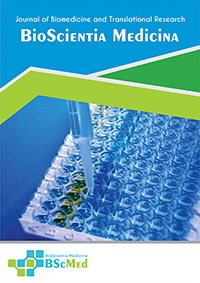Main Article Content
Abstract
Background: The unprecedented scale of global travel has amplified the diagnostic challenge of ocular parasitoses in non-endemic regions. These infections, while rare, can cause severe visual morbidity and are often misdiagnosed. This systematic review synthesizes the current evidence on parasitic eye infections in international travelers to create a comprehensive, state-of-the-art resource for clinicians.
Methods: A systematic literature search was conducted in PubMed, Scopus, ProQuest, and the Cochrane Library in accordance with the PRISMA 2020 guidelines. The search included terms for parasitic eye diseases and international travelers. All case reports, case series, and observational studies published in English detailing confirmed ocular parasitic infections in patients with a history of international travel were eligible. Data on demographics, travel, clinical presentation, diagnosis, and management were extracted from all eligible studies, and their methodological quality was assessed using the Joanna Briggs Institute (JBI) checklist. A qualitative narrative synthesis of the findings was performed.
Results: From an initial 1,408 records, 19 studies met the full inclusion criteria and were included in the final synthesis. These studies detailed infections from a wide range of helminthic and protozoan pathogens, including Loa loa, Dirofilaria spp., Thelazia callipaeda, Gnathostoma spp., Onchocerca volvulus, Toxoplasma gondii, Trypanosoma cruzi, Acanthamoeba spp., and Taenia solium (cysticercosis). Infections were acquired across Africa, Asia, and the Americas. Clinical presentations were highly diverse, ranging from migrating subconjunctival worms to sight-threatening chorioretinitis, keratitis, and intraocular cysts. Diagnosis consistently relied on a combination of high-magnification biomicroscopy, advanced serological and molecular assays like PCR, and targeted imaging. Management was pathogen-specific, involving microsurgical extraction for accessible helminths and tailored antimicrobial therapy for protozoan and systemic infections.
Conclusion: Ocular parasitoses represent a critical diagnostic challenge in returning travelers. A detailed travel and exposure history is the single most important tool to guide the differential diagnosis. Effective management requires a high index of suspicion and a collaborative, interdisciplinary approach to prevent irreversible vision loss.
Keywords
Article Details
As our aim is to disseminate original research article, hence the publishing right is a necessary one. The publishing right is needed in order to reach the agreement between the author and publisher. As the journal is fully open access, the authors will sign an exclusive license agreement.
The authors have the right to:
- Share their article in the same ways permitted to third parties under the relevant user license.
- Retain copyright, patent, trademark and other intellectual property rights including research data.
- Proper attribution and credit for the published work.
For the open access article, the publisher is granted to the following right.
- The non-exclusive right to publish the article and grant right to others.
- For the published article, the publisher applied for the Creative Commons Attribution-NonCommercial-ShareAlike 4.0 International License.





